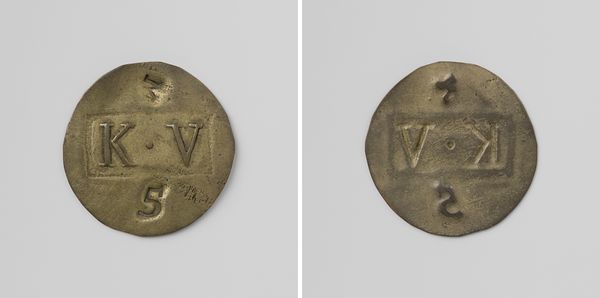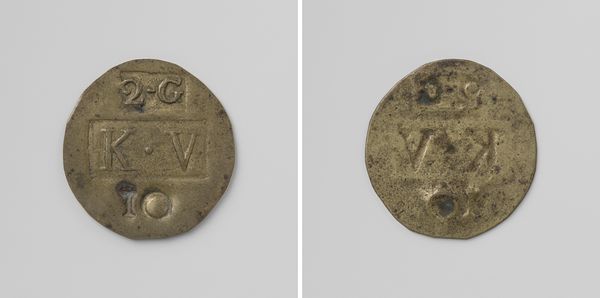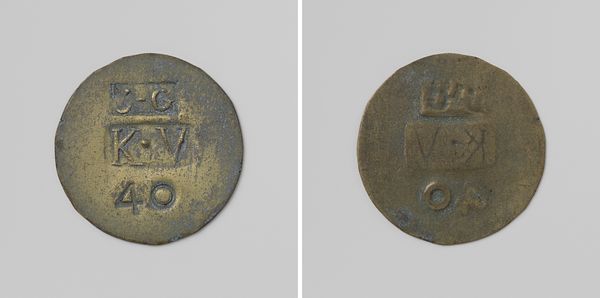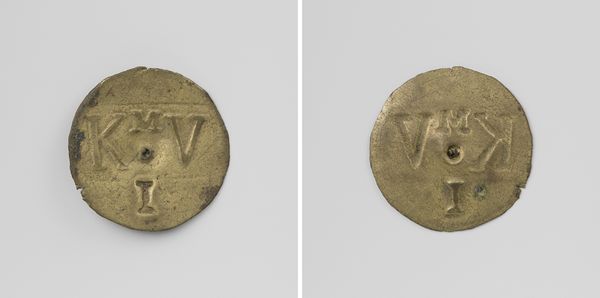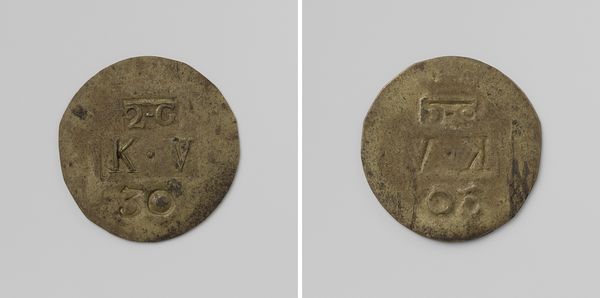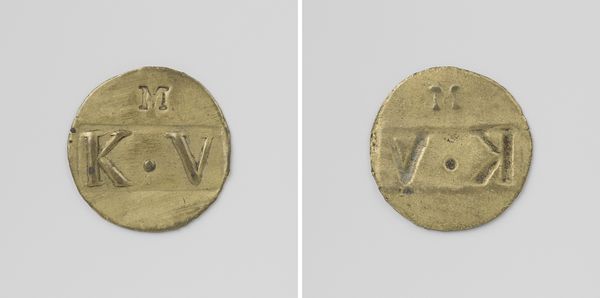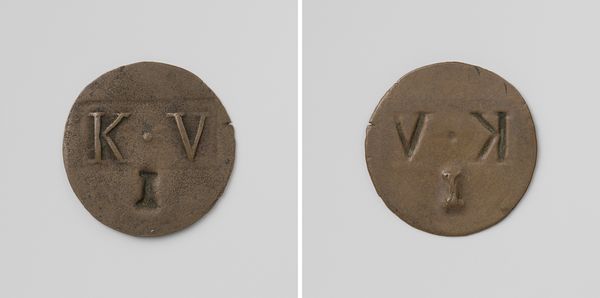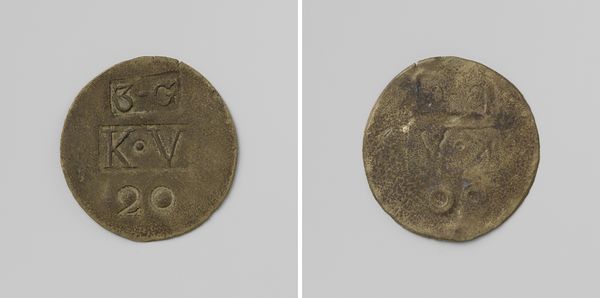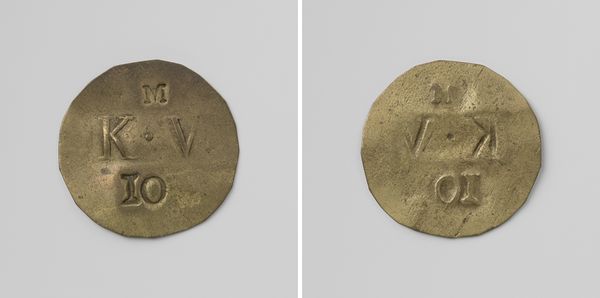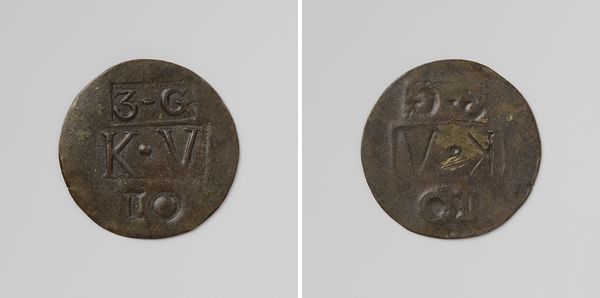
Kolonie Veenhuizen, huismunt geslagen op last van de Maatschappij van Weldadigheid ter waarde van twintig cent 1818 - 1859
0:00
0:00
mixed-media, print, metal, relief, bronze
#
mixed-media
#
medieval
#
dutch-golden-age
# print
#
metal
#
sculpture
#
relief
#
bronze
#
geometric
#
decorative-art
#
coin
Dimensions: diameter 3 cm, weight 25 gr
Copyright: Rijks Museum: Open Domain
This anonymous coin, commissioned for the Kolonie Veenhuizen, bears symbols that speak volumes. The letters "K.V." and "V.K." are not merely identifiers; they are emblems of a social experiment, an attempt to inscribe order and value upon a community. The practice of minting one's own currency dates back to antiquity, where such symbols were potent assertions of sovereignty and economic control. Think of the ancient Greek drachmas or the Roman denarii, each bearing the image of a ruler or a god, imbuing the coin with divine authority and cultural identity. Here, however, the absence of a regal figure is notable. Instead, we find the stark initials of an institution, a subtle yet powerful shift. The act of creating a localized currency represents a controlled insularity, a means of governing labor and trade within the colony's confines. The weight of 25 grams and the value of twenty cents are not just economic indicators; they are measures of human effort, meticulously quantified and regulated. It is a stark reminder of how symbols of value and authority evolve, adapt, and are imbued with new meanings across time.
Comments
No comments
Be the first to comment and join the conversation on the ultimate creative platform.
